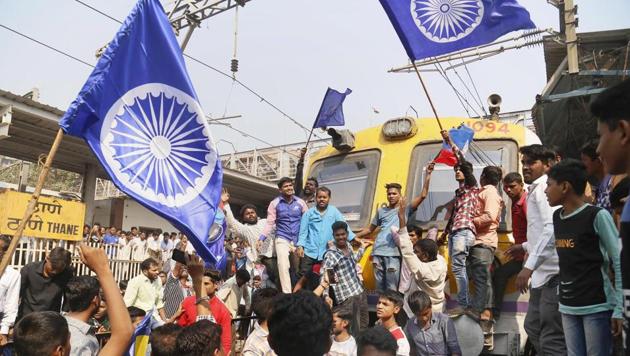Multiple fault lines have led to the Bhima Koregaon unrest in Maharashtra
Incidents of conflict between Marathas and Dalits have been occurring at regular intervals in the state of Maharashtra in the recent past. The reasons for this have to be located in the loss of political power that the Marathas have experienced after the BJP captured power in the state in 2014
Dalit protests against the violence during the celebrations of the bicentenary of the battle of Bhima Koregaon have engulfed the state of Maharashtra. It is tempting to analyse the events and their consequences in terms of simple binaries such as Hindutva versus Dalit politics or yet another sign of Maratha discontent rooted in agrarian distress in the state. Such simplistic categorisation would not help us understand the reasons and future consequences of the entire episode. Three main factors seem to have played a role in what has happened in the state in the last few days.

The trigger for the Bhima Koregaon violence seems to be a controversy between Marathas and Mahars (a Dalit sub-caste) over the question of whether it was a Dalit or a Maratha who conducted the last rites of Shambhaji, the son of Shivaji in a village near Bhima Koregaon. This is a classic case of conflict over upper caste honour with the added twist that the Dalits, unlike in the past, are not willing to back down.
Incidents of conflict between Marathas and Dalits have been occurring at regular intervals in the state of Maharashtra in the recent past. The reasons for this have to be located in the loss of political power that the Marathas have experienced after the BJP captured power in the state in 2014. The erstwhile dominance of Congress-NCP in the state is also a story of Marathas controlling political power. A post poll survey by CSDS Lokniti showed that less than one in four Marathas voted for the BJP during the 2014 assembly elections in the state. The survey also showed that Marathas are a politically divided lot and hence unlikely to regain their earlier dominance anytime soon. It is this desperation – along with their diminishing economic clout due to agrarian crisis – which is making the Marathas, a sizeable 30% of the state’s population, a volatile lot. The fact that the person who has died in the protests is a Maratha is only likely to deepen this sense of unease in the community.
The manner in which Dalit protests gained momentum in the state, including in Mumbai,shows that the anger is spontaneous in nature. This is rooted in a pent-up feeling that the State does not do its duty; and even actively discriminates when it comes to guaranteeing the safety of Dalits. Localities like Ramabai Nagar in Mumbai, where Dalits were killed in police firing during protests after a statue of B R Ambedkar was desecrated in 1997 have been at the forefront of the protests in Mumbai.
The Bhima Koregaon anniversary celebrations have a pilgrimage-like status among Dalits in the state. BR Ambedkar himself had addressed a gathering of Mahars at the event in the 1920s. A big reason for Dalit anger is the fact that adequate police deployment was not ensured despite apprehensions of violence during the celebrations. This feeling is not confined to Maharashtra alone. The protests in Una after violence against young Dalit men by gau-rakshaks in broad daylight is yet another example.
Right-wing voices have been trying to discredit the Bhima Koregaon celebrations as an anti-national activity as the Mahars fought for the British against the Peshwas. The Dalits justify their act by saying that the Peshwas practised the worst kind of caste discrimination against Dalits and their participation in the battle represents a struggle against the exploitative order. Jignesh Mevani, a radical Dalit leader and a newly elected MLA in Gujarat, termed the BJP as today’s Peshwas during the programme at Bhima Koregaon. It is worth noting that the Devendra Fadnavis, the Maharashtra Chief Minister is also a Chitpavan Brahmin like the Peshwas. Upper castes including Brahmins have been the traditional supporters of the BJP in the state. At the same time the BJP knows that it cannot risk alienating Dalits, which comprise of more than 10% of the state’s population just because their political-cultural assertion infuriates its traditional upper-caste Hindutva base.
Managing this conflict between its attempts to integrate more and more OBCs/Dalits and the upper castes, who are unwilling to compromise on their notions of historical honour and social privilege, is central to the BJP’s political fortunes — not just in Maharashtra, but across the country.
Whether or not the anger on the streets will find electoral reflection in the state’s politics will depend on how the political players handle the these contradictions.
roshan.k@htlive.com





